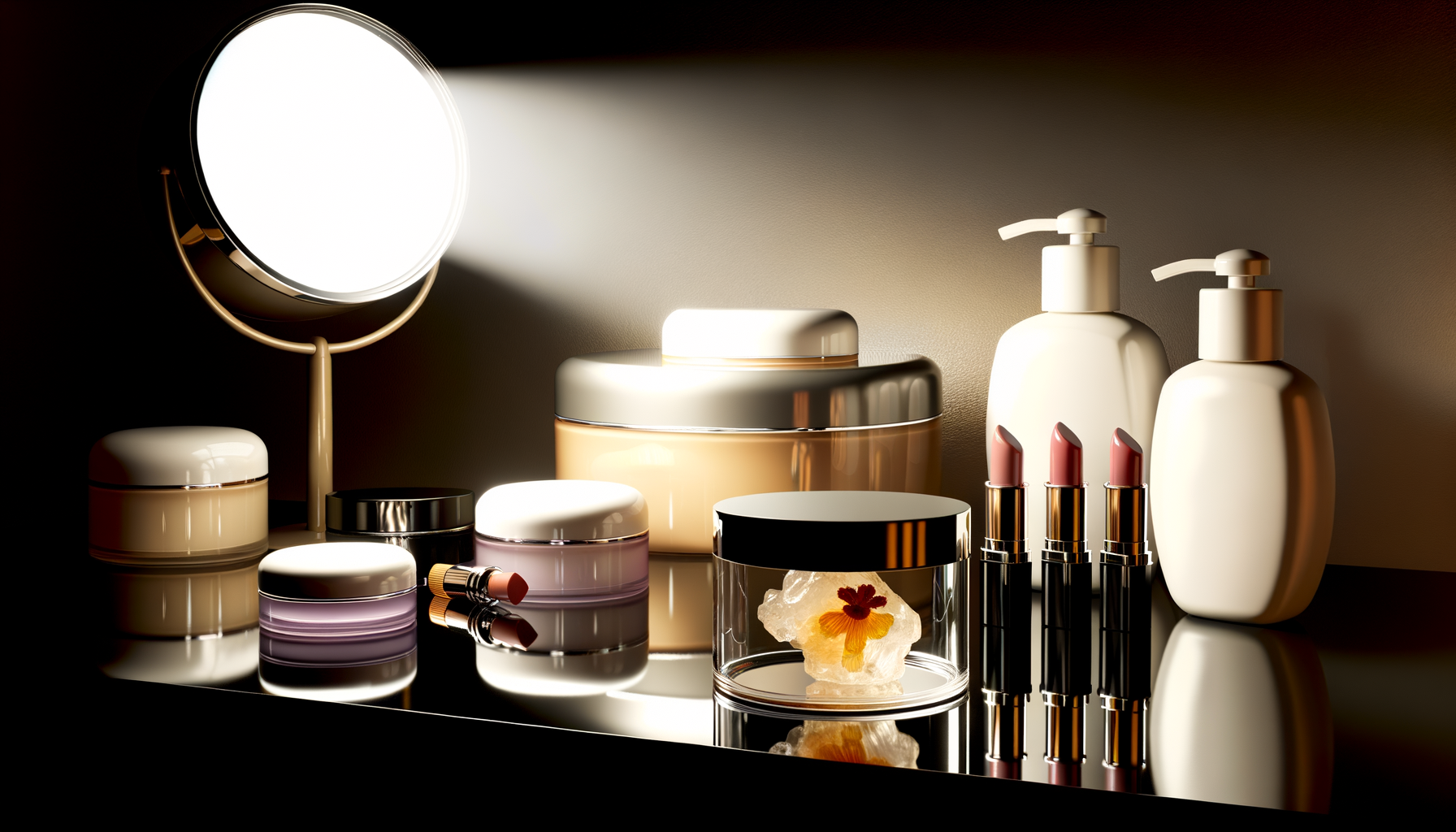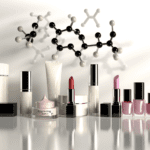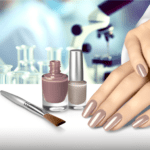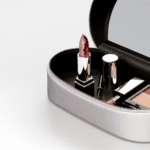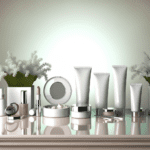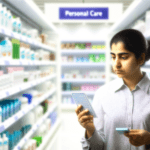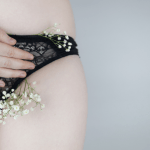Introduction to Cosmetic Preservatives
The Role of Preservatives in Cosmetics
Preservatives play a crucial role in the formulation of cosmetic products. Their primary function is to inhibit the growth of microorganisms such as bacteria, yeast, and mold, which can spoil the product and potentially harm the user. By extending the shelf life and ensuring the safety and integrity of the cosmetics we use daily, preservatives help maintain product quality and performance over time.
Overview of BHA and BHT
Butylated hydroxyanisole (BHA) and butylated hydroxytoluene (BHT) are synthetic antioxidants that serve as preservatives in a variety of cosmetic products. These closely related chemicals are effective in preventing the oxidation of fats and oils, which can lead to rancidity and degradation of cosmetic formulations. Despite their widespread use, BHA and BHT have come under scrutiny due to potential health concerns associated with their application.
Common Products Containing BHA and BHT
BHA and BHT are commonly found in a range of cosmetic products, including lipsticks, moisturizers, and other skincare items. Their inclusion in these products is due to their ability to prevent oxidative spoilage, thereby preserving the texture, scent, and color of the cosmetics. However, their presence is not limited to cosmetics; BHA and BHT are also widely used as food preservatives.
Purpose of the Article
The purpose of this article is to delve into the use of BHA and BHT in cosmetics, examining their chemical properties, reasons for use, and regulatory status. Furthermore, we will explore the potential health concerns associated with these preservatives, including their reported effects on endocrine disruption, carcinogenicity, and overall skin health. By providing a comprehensive overview, this article aims to inform and empower consumers to make educated decisions regarding their personal care products.
Understanding BHA and BHT
Chemical Properties and Functions
Butylated hydroxyanisole (BHA) and butylated hydroxytoluene (BHT) are synthetic antioxidants that share similar chemical properties. Both compounds are phenolic in nature and are characterized by their ability to donate a hydrogen atom, which stabilizes free radicals and prevents oxidative damage. This antioxidant function is crucial in preserving the integrity and longevity of cosmetic products by preventing the oxidation of oils and fats, which can lead to rancidity and spoilage.
Why BHA and BHT are Used in Cosmetics
The primary reason for incorporating BHA and BHT in cosmetics is to extend the shelf life of products and maintain their quality and safety. These preservatives are effective in small quantities and are commonly found in lipsticks, moisturizers, and other personal care items. By inhibiting oxidative reactions, BHA and BHT help to preserve the color, fragrance, and texture of cosmetic formulations, ensuring that they remain appealing and effective for consumers over time.
Regulatory Status in North America
In North America, the regulatory status of BHA and BHT varies. In Canada, both chemicals are unrestricted in cosmetics, though Health Canada has categorized BHA as a “high human health priority” due to concerns about carcinogenicity. BHT is considered a “moderate human health priority” and both are flagged for future assessment under the government’s Chemicals Management Plan. In the United States, the Food and Drug Administration (FDA) permits the use of BHA and BHT as food additives, and by extension, in cosmetics, subject to concentration limits. However, the State of California requires warning labels on products containing BHA, notifying consumers of the potential cancer risk. This discrepancy highlights the ongoing debate and scrutiny over the safety of these preservatives in cosmetic products.
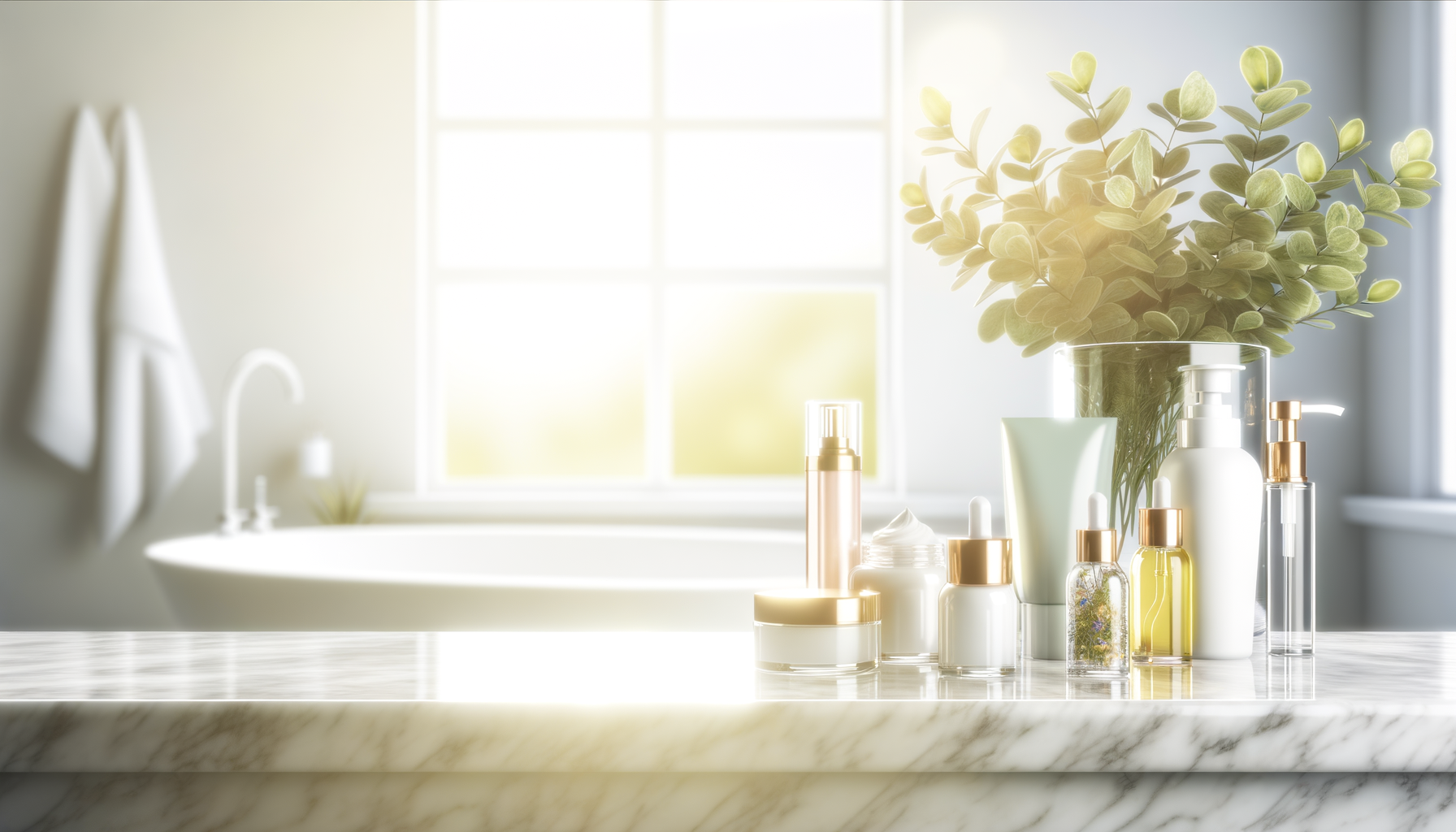
Popular Read: Endocrine Disruptors in Skincare: What You Need to Know
Potential Health Concerns
Endocrine Disruption and Hormonal Imbalance
Butylated hydroxyanisole (BHA) has been identified by the European Commission on Endocrine Disruption as a Category 1 priority substance, which indicates a high level of concern regarding its potential to interfere with hormone function. Studies suggest that BHA can mimic estrogen and inhibit the expression of male sex hormones, leading to adverse reproductive effects. Similarly, limited evidence points to BHT’s ability to mimic estrogen, raising concerns about its impact on hormonal balance and overall endocrine health.
Links to Cancer
The International Agency for Research on Cancer (IARC) classifies BHA as a possible human carcinogen. Experimental studies have shown that dietary exposure to BHA can lead to the development of benign and malignant tumors in animals. While human epidemiological data are inadequate to conclusively link BHA to cancer, the presence of BHA in a variety of consumer products, including cosmetics, warrants caution and further investigation.
Impact on Aging and Skin Health
While BHA and BHT are effective in preserving the shelf life of cosmetics, they can also induce allergic reactions in the skin. These reactions can range from mild irritation to more severe dermatological conditions, potentially exacerbating the aging process and compromising skin health. The potential for these preservatives to bioaccumulate in aquatic organisms also raises questions about their long-term impact on human skin when absorbed from cosmetic products.
Other Reported Health Risks
Aside from the risks mentioned above, BHA and BHT have been associated with a variety of other health concerns. High doses of BHT have been found to be toxic in mice and rats, causing issues with liver, thyroid, and kidney function, as well as affecting lung function and blood coagulation. The potential for these effects to translate to humans, particularly through long-term exposure, is a significant concern. Additionally, BHA is listed as a chemical of potential concern under the Convention for the Protection of the Marine Environment of the North-East Atlantic, due to its toxicity to aquatic life and potential for bioaccumulation.

Do you have the most commonly used but toxic, disease bringing chemicals in your skin care? Many chemicals in skincare are hormone disruptors and make menopause symptoms worse.
Find out more…
Scientific Studies and Evidence
Research on BHA and BHT Safety
The safety of Butylated Hydroxyanisole (BHA) and Butylated Hydroxytoluene (BHT) in cosmetics has been a subject of extensive research due to their widespread use as preservatives. Studies have focused on their potential cytotoxic and genotoxic effects, with particular attention to their impact on somatic cells. For instance, research using Allium cepa root cells has revealed concentration-dependent growth retardation and increased frequency of chromosomal aberrations following exposure to BHA and BHT. These findings suggest that BHA and BHT can be cytotoxic and genotoxic at certain concentrations, raising concerns about their safety in cosmetic products.
Controversies and Conflicting Results
Despite the evidence of potential risks, the scientific community has not reached a consensus on the safety of BHA and BHT. Some studies have reported antioxidant properties and anticarcinogenic effects, while others have highlighted their role in inducing DNA damage and mutagenesis. The conflicting results from various studies have contributed to ongoing debates about the regulatory status of these preservatives and their acceptable levels of use in consumer products.
Limitations of Current Research
One of the major limitations in the research on BHA and BHT is the variability in experimental methodologies and the interpretation of results. Many studies have relied on in vitro assays, which may not accurately reflect the complex interactions and metabolic processes in human physiology. Additionally, the concentrations of BHA and BHT used in laboratory settings often exceed those typically found in cosmetic products, making it challenging to extrapolate findings to real-world scenarios. Furthermore, there is a need for long-term studies to understand the cumulative effects of these preservatives, as well as research on their behavior in mixtures with other cosmetic ingredients.
In conclusion, while there is evidence to suggest that BHA and BHT can pose risks to human health, further research is needed to fully understand their safety profile. Consumers and regulatory agencies must navigate these uncertainties by balancing the benefits of these preservatives against their potential perils.
Do you know the 3 main ways how your body is exposed to harmful chemicals, which affect your hormones, your thyroid, health and beauty?
If not, it may be time to learn about them. It takes about 1-2 minutes.
We have a few suggestions how to avoid these silent health and immune system killers in our new guide.
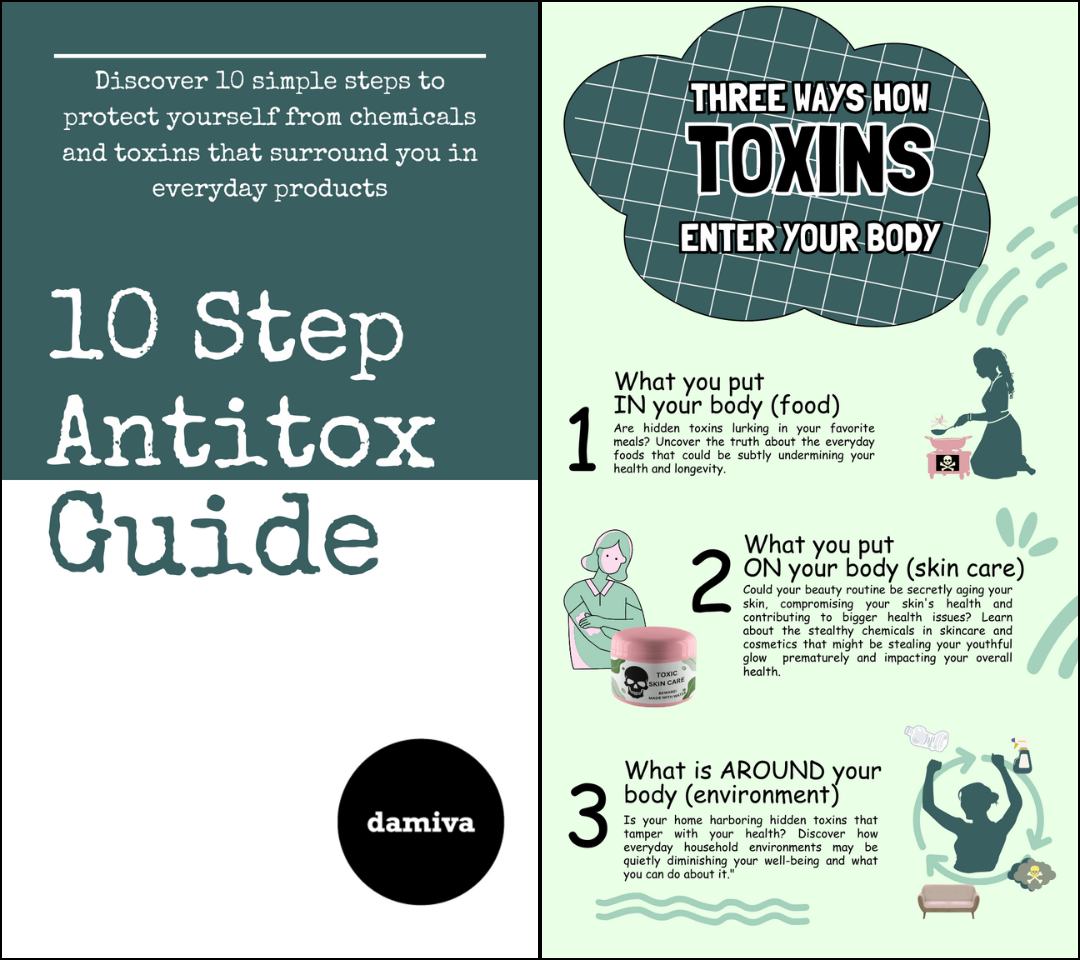
Navigating Personal Care Products
How to Identify BHA and BHT on Labels
Identifying BHA (Butylated Hydroxyanisole) and BHT (Butylated Hydroxytoluene) on product labels is crucial for consumers who wish to avoid these preservatives. These compounds can be listed under various names, including E320 for BHA and E321 for BHT. They are often found in the ingredients list towards the end, as they are used in small quantities. It’s important to note that BHA and BHT may also be hidden under terms like “antioxidants” or “preservatives” without specific mention. Therefore, vigilance and familiarity with their aliases are key to making informed choices.
Alternatives to BHA and BHT
For those seeking safer options, numerous natural alternatives to BHA and BHT exist. Vitamin E (tocopherol), rosemary extract, and green tea extract are potent antioxidants that serve similar functions in products. Additionally, ascorbic acid (vitamin C) and its derivatives are effective preservatives that also provide skin benefits. However, vitamin C can react with certain chemicals in other skincare that you may also use, to form carcinogenics, like benzene.
When shopping, look for products that that are NOT water-based. The best tip is really to avoid any water-based skincare products: Because water is a breeding ground for microbes, brands and manufacturers need to add synthetic chemicals as preservatives. And many of these are harmful for humans, animals and environment as they disturb the hormone system, can cause cancer, reduce fertility, etc.
Choosing water-free lotions, creams and balms (which can be made without chemicals) is an easy way to avoid these added chemicals.In conclusion, while endocrine disruptors in personal care items are an invisible threat, informed choices and a proactive approach to personal care can significantly reduce your exposure.
Tips for a Chemical-Free Cosmetic Routine
- Read Labels Carefully: Always check the ingredients list for water. Choose products where no water is contained. Check also for BHA, BHT, and other synthetic chemicals.
- Choose All-Natural: Opt for products that are chemical-free (“all-natural”), as they are less likely to contain harmful preservatives.
- DIY Skincare: Consider making your own skincare products using natural preservatives to have complete control over the ingredients. Or, more conveniently, use damiva products.
- Shorter Shelf Life Acceptance: Embrace products with a shorter shelf life, which often indicates the absence of strong synthetic preservatives.
- Consult EWG’s Skin Deep Database: Use resources like the Environmental Working Group’s Skin Deep database to research product safety.
Holistic Approaches to Beauty and Wellness
Natural and Organic Cosmetic Options
The quest for beauty products that are not only effective but also safe and environmentally friendly has led to a surge in the popularity of natural and organic cosmetics. These products are formulated with ingredients sourced from nature, free from synthetic chemicals, and often cultivated using organic farming methods. Natural and organic cosmetic options provide consumers with a way to care for their skin and body without exposing themselves to potentially harmful substances. They also offer the added benefit of being kinder to the planet, as they minimize the use of pesticides and other harmful agricultural practices.
The Importance of a Holistic Lifestyle
Beauty is not just skin deep; it is also a reflection of overall health and well-being. A holistic lifestyle emphasizes the connection between the mind, body, and spirit. It involves making conscious choices that promote health and well-being, such as eating nutritious foods, staying physically active, getting adequate rest, and managing stress. By adopting a holistic approach to living, individuals can improve their appearance from the inside out, leading to a natural glow that no cosmetic can replicate.
Personalization in Health and Beauty
Every individual is unique, and so are their health and beauty needs. Personalization in health and beauty is about recognizing and catering to these individual differences. Advances in technology and a better understanding of human genetics have paved the way for personalized skincare routines, custom-formulated cosmetics, and health plans tailored to an individual’s specific requirements. This personalized approach ensures that individuals receive the most effective treatments and products, leading to better outcomes and higher satisfaction.
In conclusion, the shift towards holistic approaches in beauty and wellness is a response to the growing awareness of the impact of our choices on our health and the environment. By embracing natural and organic cosmetics, adopting a holistic lifestyle, and personalizing our health and beauty regimens, we can achieve a state of well-being that radiates from within.
Do you know the three main ways that your body gets in touch with harmful chemicals with everyday products? Knowledge is Power!
The Ultimate Detox Guide will tell you how to lower your exposure to harmful chemicals!

Conclusion and Recommendations
Summary of Key Points
The use of Butylated Hydroxyanisole (BHA) and Butylated Hydroxytoluene (BHT) as preservatives in cosmetics has been a topic of concern due to their potential health risks. These synthetic antioxidants are commonly found in a variety of personal care products, including moisturizers, lipsticks, and even food items. Despite their effectiveness in preventing product spoilage and extending shelf life, studies have indicated that BHA and BHT can be cytotoxic and genotoxic, leading to cellular damage and potential health hazards such as endocrine disruption, carcinogenicity, and skin health impacts.
Empowering Consumers with Knowledge
It is imperative that consumers are equipped with the knowledge to make informed decisions about the products they use. Understanding the chemical properties of BHA and BHT, their regulatory status, and the scientific evidence regarding their safety is crucial. Consumers should be encouraged to read product labels carefully and be aware of the presence of these chemicals in their cosmetics and the role that water plays. Water is the door opener for chemicals. Hence the best strategy is to buy water-free products.. Additionally, being informed about alternative preservatives and natural options can help consumers choose safer products.
Final Thoughts on Safe Cosmetic Practices
While the debate on the safety of BHA and BHT in cosmetics continues, it is advisable for consumers to err on the side of caution. Opting for products with clearly labeled, safer alternatives or those that are preservative-free can minimize potential risks. Moreover, supporting brands that are transparent about their ingredients and committed to non-toxic formulations can drive the industry towards safer and more sustainable practices. Ultimately, a holistic approach to beauty and wellness that prioritizes health over convenience may be the wisest path for consumers to take.
